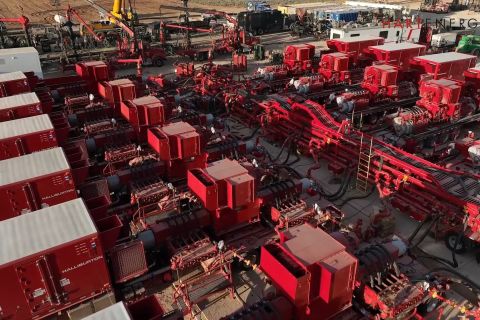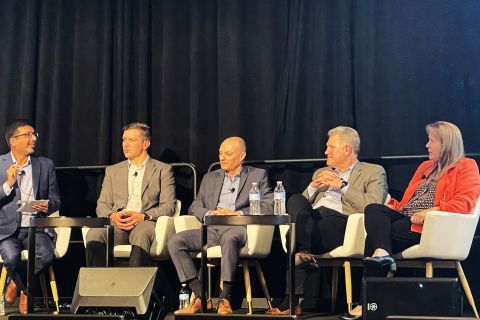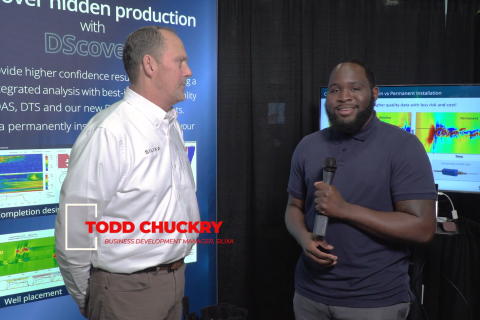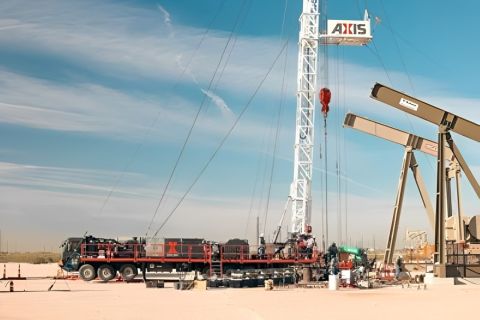With oil sands mining production expected to more than double in the next five years – from production of 1.2 MMb/d to 3.5 MMb/d – oil producers are looking for harder, tougher steel products to withstand the resource’s abrasiveness and high acidity.
While oil sands, also known as tar or bituminous sands, occur in several locations around the world, some of the most extensive deposits are located in three major areas in northern Alberta, Canada: the Athabasca-Wabiskaw oil sands of north-northeastern Alberta, the Cold Lake deposits of east-northeastern Alberta, and the Peace River deposits of northwestern Alberta. These deposits cover more than 140,000 sq km (54,000 sq miles) – an area larger than England. Alberta’s oil sands are the main source of oil for Canada and also are the main source of foreign oil for the US, providing more oil than any other country. The 2012 BP Statistical Review of World Energy estimates Alberta’s total proven reserves (those thought to be economically recoverable) to be more than 169 Bbbl.
Unlike traditional crude oil fields, where the oil flows freely, oil sands consist of bitumen, a dense, highly viscous form of petroleum – often described as having the consistency of cold molasses – that resembles tar in appearance, odor, and color. While bitumen has been used by mankind for millennia for building, caulking boats (including the birch bark canoes of Native Americans), and even preserving mummies, oil and gas companies have avoided the development of oil sands for decades due to the high cost of extracting, transporting, and converting it into usable fuel. Of Canada’s oil sands reserves, only 26 Bbbl – or about 15% – are under active development. But the growing worldwide demand for oil, coupled with efficient new technologies, is now enabling the profitable development of these reserves.
One of these new technologies is MesoCoat’s Cerma-Clad wear-resistant alloy (WRA) clad pipe. This technology for cladding pipe is proving to be faster, better, and more cost-efficient than conventional weld overlay or laser pipe cladding technologies.
Purpose of cladding
The general purpose of cladding is to protect the low-cost underlying carbon steel at a fraction of the cost of using more expensive solid steel alloy for the entire product. While metallurgically clad carbon steel is cheaper than solid steel alloy, the conventional technologies used to produce clad pipe – weld overlay and laser cladding – are slow and cumbersome and have seen little to no improvement in decades.
In addition to low productivity, which causes long lead times, the cladding itself has quite a lot of porosity and cracks, making the product unreliable to some extent. In the oil sands industry, hot water and caustic soda are added to the excavated product to make it more viscous, with the resulting slurry being piped to an extraction plant. Clad pipes manufactured using conventional technologies with chromium carbide and tungsten carbide coatings are currently used in oil sands applications for hydrotransportation lines that transport the slurry from the mining fields to extraction plants and for the tailings pipes that carry the pumped residue to settling basins where the water is recycled. Due to the highly abrasive nature of the slurry, however, such pipes have to be rotated every four months and replaced every 12 to 15 months. Also, the cost of downtime and maintenance involved in rotating and replacing these pipes is very high – about US $500 million annually for one company alone.
By contrast, the WRA technology, which was originally developed at the US Department of Energy’s Oak Ridge National Laboratory and then matured and customized by MesoCoat., uses a high-intensity arc lamp with up to 1 MW of power to rapidly fuse protective materials onto metals, creating a metallurgical bond in less than half a second. In addition, the cladding technique creates a true metallurgical bond, with no damage to the substrate and improved metallurgical properties. Also, the technique enables a greater lifespan for clad pipe by virtue of the smoothness of the finish, which has minimal porosity and cracking and which does not contain imperfections that allow corrosion to gain a foothold.
In addition to clad pipe, CermaClad also can be used in the oil sands industry for large components such as hydraulic excavators, dump truck parts, beds, screens, and cyclones.
Wear-resistant coating products
MesoCoat, a member of the Abakan family of companies, offers three proprietary WRA products for use in clad pipe for the oil sands industry: chromium carbide-based WRA-CC, tungsten carbide-based WRA-WC, and semi-amorphous metal (SAM) WRA-SAM.
WRA-WC can be applied at lower cost and at two to three times the thickness of tungsten carbide materials that are applied through conventional weld overlay technologies without the cracking or spallation that occurs with these technologies. In addition, the reduced thermal input of the technology minimizes a problem called “carbide dissolution,” significantly increasing coating durability. Finally, the high speed of the process enables up to a 40-fold reduction in processing time compared to other application techniques, which reduces capital costs.
Abakan has completed lab-testing of its WRA-WC solution with one of Canada’s largest oil sands producers, with test results demonstrating a significantly lower wear rate, minimal dilution, crack-free coatings, and low porosity for clad thicknesses ranging from 8 mm to 15 mm by comparison with conventional tungsten carbide solutions.
A WRA-SAM cladding solution that uses proprietary SAM wear-resistant overlay cladding also is being developed and qualified, enabling an even further extension of the wear-free life of assets. This type of product is being actively sought by Canadian oil sands producers to provide more cost-effective solutions to address the extensive wear problems in slurry line applications. The WRA-SAM solution uses a proprietary structural amorphous metal formulation that provides twice the efficiency of currently used chromium carbide cladding, which is the dominant technology in the mining and oil sands industry.
The SAM materials are very similar to the materials used to make the Gillette Mach3 and Mach5 razor blades and are the most wear-resistant materials known to man. MesoCoat has an agreement to allow the exclusive use of these nanocomposite metal materials from the Oak Ridge National Laboratory. In addition to protecting large areas of steel, a second technology platform, the PComP family of proprietary nanoengineered ceramic-metallic thermal spray coatings, is being used to protect a wide range of smaller oil and gas components including pumps, severe-service valves, mandrels, compressors, mud rotors, heat exchanges, gear boxes, process vessels, and centrifuges as well as equipment used in in situ bitumen recovery such as valves and drilling equipment.
With the expected increase in oil sands production in Alberta, Abakan is working with the provincial government in Alberta on an R&D facility and also expects to build a pipe-cladding facility to meet that province’s need for wear-resistant clad pipe.
Recommended Reading
Exclusive: Halliburton’s Frac Automation Roadmap
2024-03-06 - In this Hart Energy Exclusive, Halliburton’s William Ruhle describes the challenges and future of automating frac jobs.
Fracturing’s Geometry Test
2024-02-12 - During SPE’s Hydraulic Fracturing Technical Conference, industry experts looked for answers to their biggest test – fracture geometry.
Exclusive: Silixa’s Distributed Fiber Optics Solutions for E&Ps
2024-03-19 - Todd Chuckry, business development manager for Silixa, highlights the company's DScover and Carina platforms to help oil and gas operators fully understand their fiber optics treatments from start to finish in this Hart Energy Exclusive.
Axis Energy Deploys Fully Electric Well Service Rig
2024-03-13 - Axis Energy Services’ EPIC RIG has the ability to run on grid power for reduced emissions and increased fuel flexibility.
Defeating the ‘Four Horsemen’ of Flow Assurance
2024-04-18 - Service companies combine processes and techniques to mitigate the impact of paraffin, asphaltenes, hydrates and scale on production—and keep the cash flowing.





